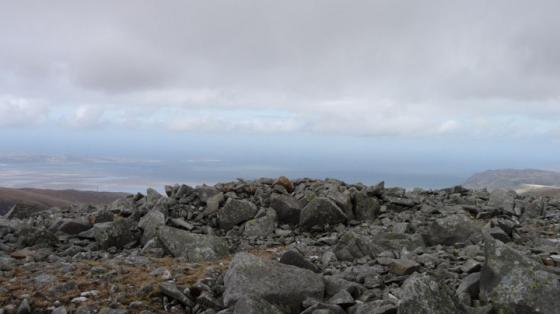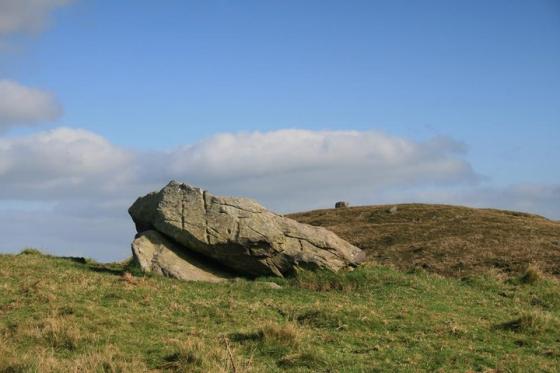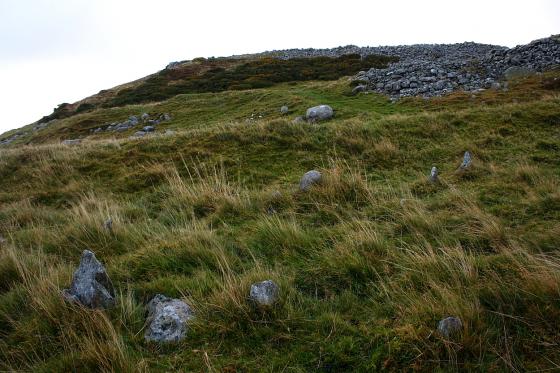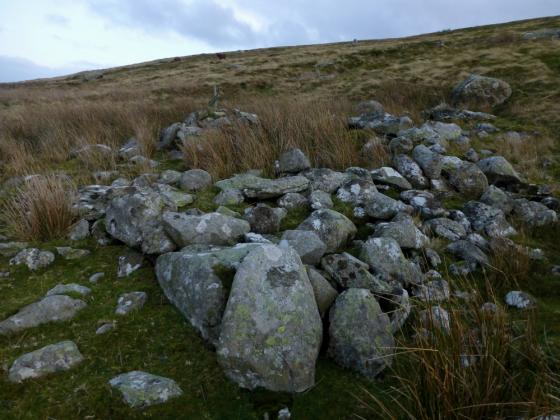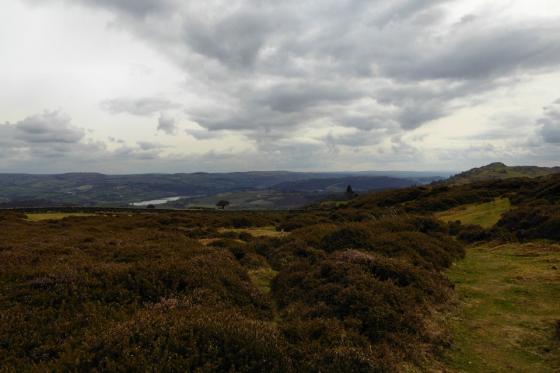As alluded to in previous fieldnotes, it is perhaps somewhat ironic that the great, domed summit plateau of Carnedd Llewelyn is not crowned by a monument more ‘worthy’ of the position.... particularly bearing in mind the association with the Princes Llewelyn (never been quite sure which was given the honour, if not both?) and the much more substantial cairn gracing Foel Grach, below to the north. But there you are. The Bronze Age peoples of Snowdonia did behave in strange and wondrous ways, did they not? And, of course, the Carnedd Llewelyn cairn has undoubtedly suffered far more erosion from the boots of walkers than the much more obscurely sited Foel Grach monument, not only surmounting the highest peak of Y Carneddau, but also standing at the ‘crossroads’ of four of the range’s main ridges. Yeah, it was a suitable spot, all right.
I reckon most aficionados of the mountain would agree that the most exciting route to the summit is via Pen Yr Ole Wen, the most taxing probably the very long approach from Bont Newydd to the north. Another possibility, however, is a high level circuit of Cwm Eigiau. I arrived by way of the northern arc of this last option this time around, via a very worthwhile diversion to Foel Grach en-route, descending in more or less the same manner.
Carnedd Llewelyn’s Bronze Age cairn surveys a brutal landscape of rock. Gone are the grassy, whaleback ridges of the northern Carneddau, the main ridge, connecting the sentinel peak to its neighbour, Carnedd Dafydd, narrow and precipitous in comparison, anticipating Tryfan and Y Glyderau across the Ogwen valley. Ha! This truly is a warrior’s grave, a spot suitable for martial heroes hewn out of the metaphorical granite. Hell, for Arthur himself, even. Never mind Llewelyn. All is on a grand scale... save the cairn itself... the towering crags of Ysgolion Duon (’The Black Ladders’) visible across Cwm Llafar to the south west, the be-cairned summit of Carnedd Dafydd rising above; the vistas stretching to all points of the compass, none more so than toward a veritable tsunami of cloud pouring over Tryfan to periodically engulf me, sat upon this stone pile, in clammy, opaque vapour. I feel terribly vulnerable (Carnedd Llewelyn is notoriously difficult to navigate from in mist, so please have your compass bearings to hand), yet paradoxically more alive than I’ve probably ever been, at least in recent memory. The cloud suddenly disperses, as if a drawn up by an unseen, giant hand, leaving a ‘Brocken Spectre’ of myself in the void above Ffynnon Llyffant. It is a special moment. Yeah, clearly it’s not the size, but where you put it that counts. At least in respect of Bronze Age cairns....
Another possible funerary cairn – Tristan’s – (again attributed much folklore) lies below, to the south-east, above the source of the Afon Llugwy. There is a further, more certain example gracing the summit of Pen Llithrig Y Wrach, beyond Pen Yr Helgi Du. These monuments lie upon the second half of the Cwm Eigiau skyline route. However I do not have the stamina today – and probably will never have again – so consequently must return the way I have come. In many respects this is a blessing in disguise since I’m thus able to truly chill out (tell me about it... it’s freezing) upon this fabulous mountain top for an extended period. Nothing to do but simply use my senses. There is an awful lot to perceive, it has to be said. Little details, like the cairn footprint suggesting an orientation toward Carnedd Dafydd... to pondering the biggest questions of all.
According to author Terry Marsh (as related within his guide ‘The Mountains of Wales’) there exists in Los Angeles (of all places) a religious sect which believes that Carnedd Llewelyn is one of nineteen ‘holy mountains’ throughout the world to endow the visitor with ‘cosmic energy’ enabling him/her to give enlightenment and unselfish service to mankind. Hmm. I’ll keep an open mind in that respect.... and would like to find out who they are and on what basis they think that.... but I have to admit a visit to Carnedd Llewelyn is memorable, to say the least. Probably need to work on the altruism, though.












